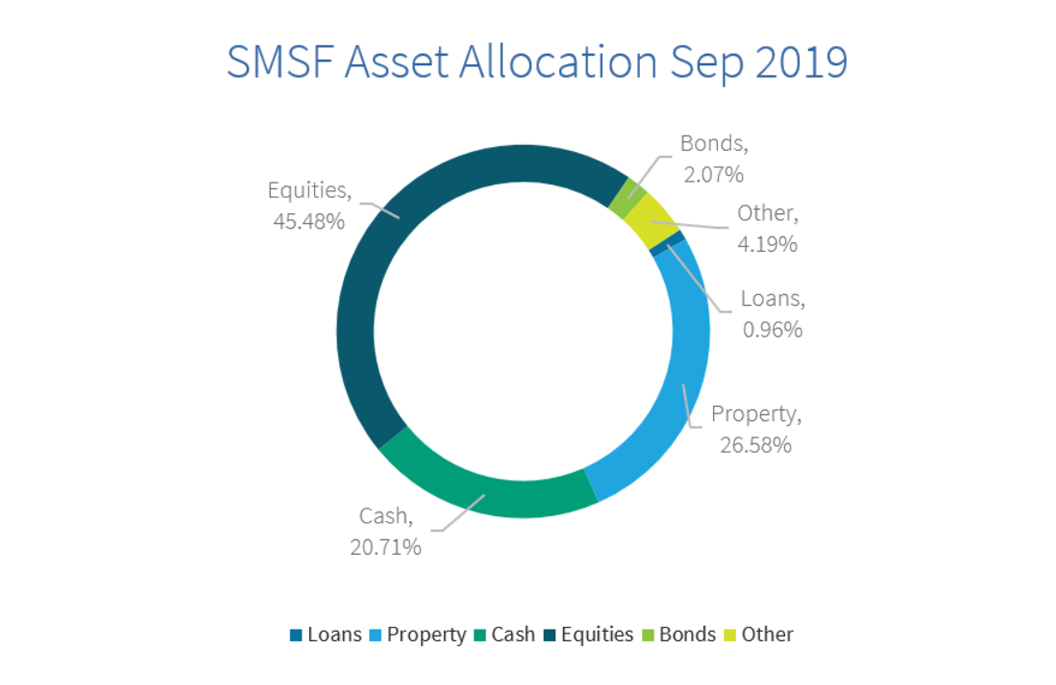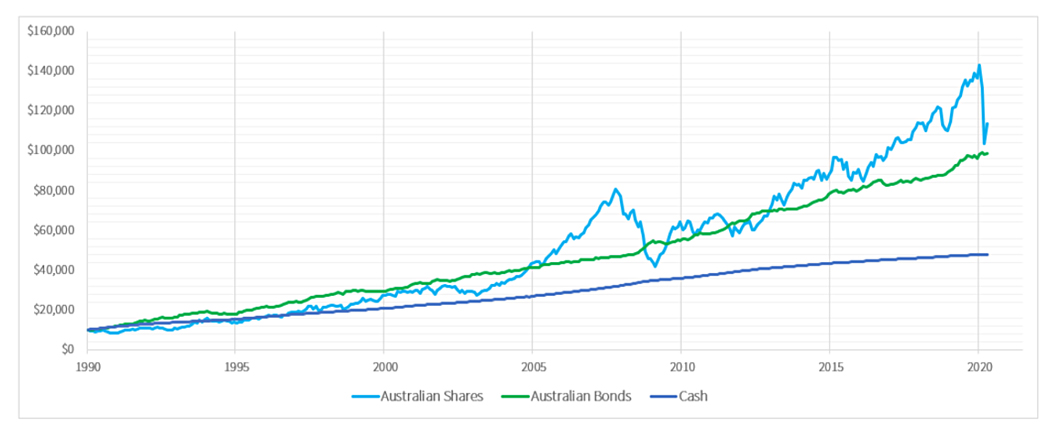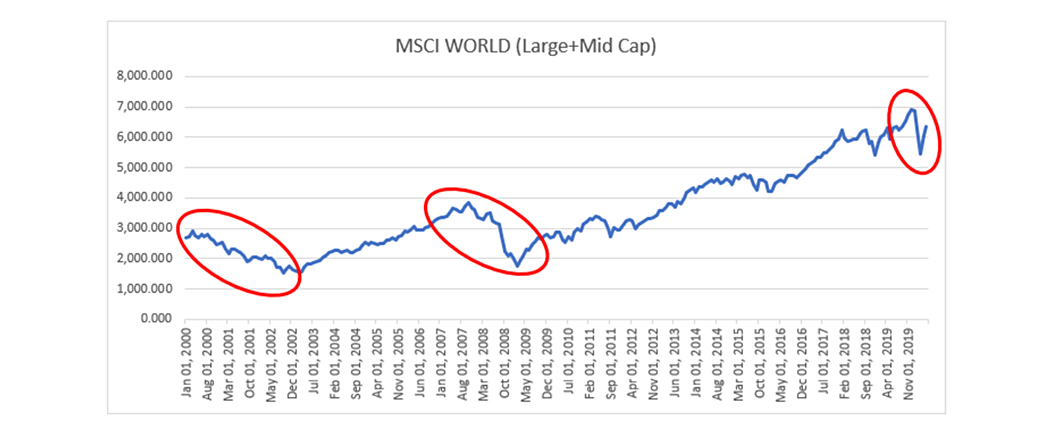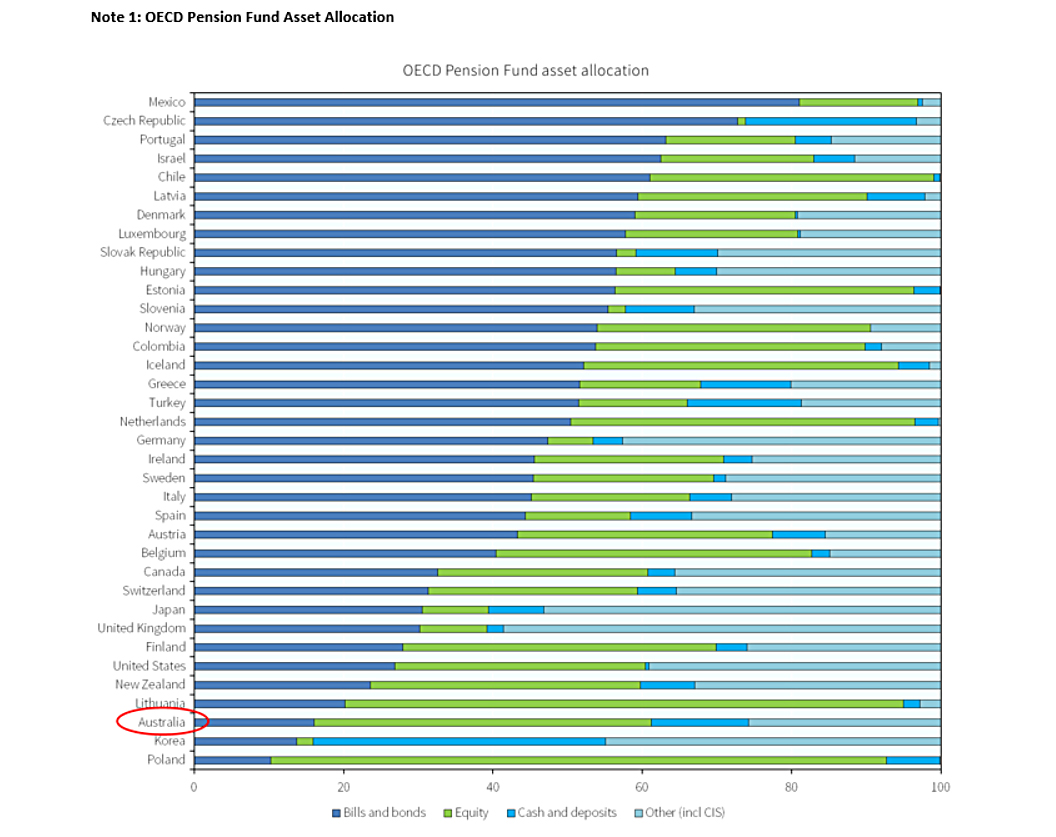Asset Allocation - a good time to rebalance

FIIG Securities
As the end of the financial year approaches, it is a traditional time to take stock and see how one’s portfolio has performed.
Please take a few minutes to watch our recent video on how we think you should alter your asset allocation as you age, and then consider the information below and how your portfolio has performed over the last few months, in particular with regard to its volatility.
I would expect, both from anecdotal and statistical reports, most Australian investors have been on a wild ride over the last 4 months as the coronavirus pandemic has played havoc with portfolios.
The ATO provides a quarterly update on the asset allocation of self-managed super funds (SMSF) (found here) which provides a useful look into how assets are currently split amongst self-directed superannuants.
The most current data is as at September 2019 and has been remarkably constant for a while.
It shows a huge overallocation to risky assets, being equities and property:

Managed funds, both listed and unlisted, account for 22.1% of all assets.
The key assumption here is that these managed funds are split in the same proportions as their direct holdings, i.e. Equities are 57.4% and Property is 33.5% of all managed funds. I have assumed that no cash is held in a managed fund, as cash allocations in these funds are presumably “dry powder” waiting to be applied to that particular asset class rather than a permanent allocation to cash.
The actual allocation to directly owned bonds is just 1.5% of all assets. See the end of the article for how we compare globally – it is still poor…
This risky allocation has worked relatively well for Australian investors given the hitherto uninterrupted economic expansion we have experienced for the last 29 years before the coronavirus pandemic ruined everyone’s party globally.
In the Vanguard returns chart below, Australian shares are now back close to the long term bond index level:

Source: (VIEW LINK)

For the rest of the world this is just another recession to deal with, to go along with the early 2000s tech wreck, the GFC in 2008/9 and now this one in 2020. 3 recessions in 20 years seems a lot to me…
As you can see from the below chart, in each case global equities declined by approximately 50% from peak to trough and lasted approximately 2 years.

Source: (VIEW LINK)
I expect the economic damage from this pandemic to persist longer than is currently priced in, and so there is potential for risk asset prices to fall further from here given the speed of the recovery being based on hope not reality.
Based on history, which as we know does not repeat but it sure does rhyme, we can likely expect another 18 months or so of economic pain before we really start to see a proper recovery.
Conclusion - take the opportunity when it exists
Like in previous recessions, there has been a classic ‘bear market bounce’. This offers investors another opportunity, very recently since the last all-time highs in stocks, to exit these riskier positions and move their asset allocations to a less risky position for the next few years and avoid the pain of potential future drawdowns in risky asset prices.
Clearly there has been unprecedented central bank intervention and fiscal stimulus but remember that all of this support is just to plug the short-term gap – it is not necessarily a total net stimulus. The world economy was slowing long before coronavirus became the straw that broke that particular camel’s back.
It therefore follows that now is a good time to reassess asset allocations of SMSFs in particular and bring them more into line with global best practice.
For example the UK pension fund average allocation to bonds is 30.2% and in the US it is 26.9%. The respective allocation to equities is 9.0% and 33.5%, and to cash just 2.2% and 0.5% respectively (see note 1 at the end of the article for the data).
There has been a timely reminder of what can happen to funds over exposed to risk assets, and yet there is also an opportunity to correct that misallocation without suffering a heavy loss.
This is likely to set up investors better for the probable drawdown to come and also to provide the security of capital and predictability of income from bonds versus equities (note that dividends, particularly bank dividends, have been cut significantly, in some cases to zero as with ANZ and WBC).

Source: http://www.oecd.org/daf/fin/private-pensions/globalpensionstatistics.htm
Please note that the OECD database gathers information on investments in Collective Investment Schemes (CIS) and the look-through of these investments in equities, bills and bonds, cash and deposits and other. Data on asset allocation in these figures include both direct investment in equities, bills and bonds, cash and deposits and indirect investment through CIS when the look-through of CIS investments is available. Otherwise, investments by pension funds in CIS are shown in a separate category.
Get investment insights from industry leaders
Liked this wire? Hit the follow button below to get notified every time I post a wire. Not a Livewire Member? Sign up for free today to get inside access to investment ideas and strategies from Australia’s leading investors.
4 topics

Jon is FIIG Securities’ Chief Investment Strategist. Also a Chartered Accountant, Jon has been working in multi-asset class investment markets for over 15 years, and now specialises in providing fixed income solutions for FIIG’s clients.

Jon is FIIG Securities’ Chief Investment Strategist. Also a Chartered Accountant, Jon has been working in multi-asset class investment markets for over 15 years, and now specialises in providing fixed income solutions for FIIG’s clients.
